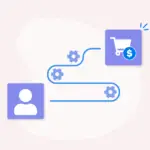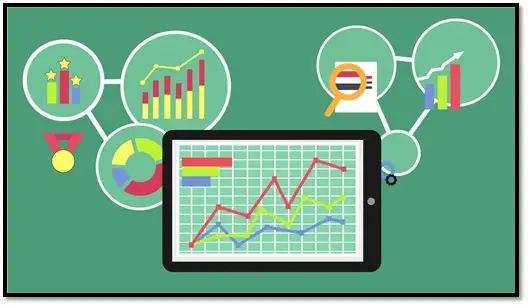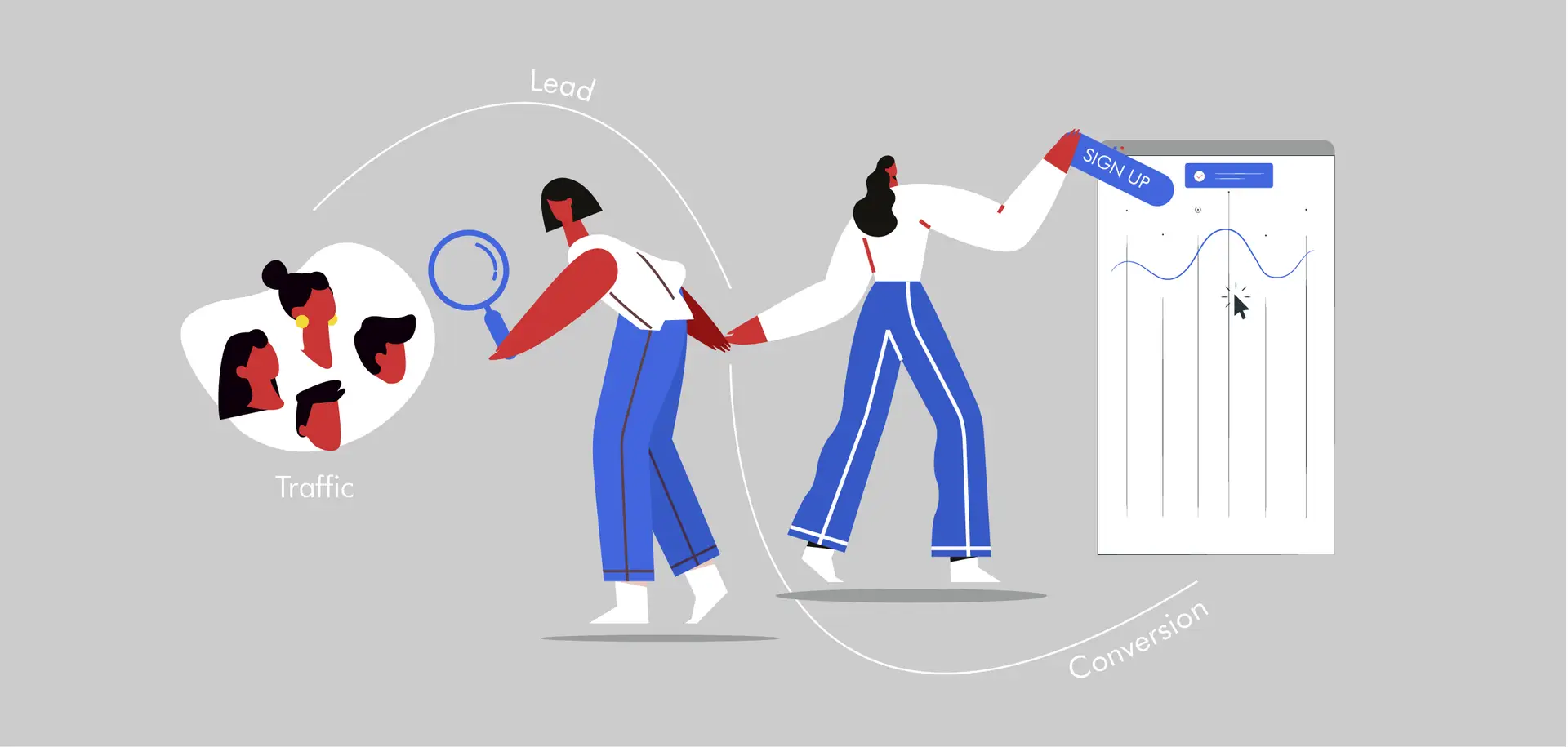Today, in the digital era; almost every business which wants to expand its web presence has to choose between two primary strategies: SEO and SEM. SEO and SEM Try to acquire Traffic through search engine like Google, but they work in a different way and have their own benefits. With a clearer understanding of the differences between these methods, businesses can strategically decide whether an omnichannel or multichannel strategy benefits their goals stimuli.
In this article we will have a look of the differences between SEO and SEM, advantages for both and how to determine what would drive more success according to your business.
What is SEO?
It is the practice of applying guidelines to a website to be more search engine friendly and so that it can place higher in organic search results. SEO encompasses a range of tactics to improve the website appearances not by the paid advertising. It is trying to achieve the goal of improving the amount and quality of traffic to your website simply by being more relevant to search engine algorithms and users.
Also Read
Key Elements of SEO:
- On-Page SEO: This means optimizing individual web pages to rank higher. This can be achieved with Proper Keyword research, quality of content, meta tags etc…. so many checks are there URL structure internal linking and s0 on….
- Off-Page SEO Off-page SEO is basically about how other websites link to your website on the internet. Due to generating high-quality backlinks, the chances of increased searching would go even higher.
- Technical SEO: Also known as backend optimization (i.e., site speed, mobile-friendliness, crawl errors etc). The goal of all this is to make your website easy for search engines to index and interpret.
- Content Marketing : the foundation of SEO is quality contents. Websites can attract an audience and rank on targeted keywords by publishing valuable, relevant content consistently.
What is SEM?
However, Search Engine Marketing (SEM) is a more generic term that includes both paid search strategies such as PPC and organic search results. But, it is most commonly associated with paid search advertising — sometimes also referred to as Pay-Per-Click (PPC) advertising. With Search Engine Marketing (SEM), you pay for your ads to appear at the top of search engine results pages (SERPs) often above the organic listings.
Key Elements of SEM:
- Paid Search Ads – Enterprises bid for certain keywords and show their ads when these terms are searched by users. Anyone who clicks on the ad is considered to be an advertiser paying for it (PPC model)
- Keyword Targeting: In order to bid and target your Ad Copy, SEM campaigns need to do comprehensive keyword research. All of these keywords need to be business-relevant and high-likely to match your ideal customer.
- Ad Copy: The success of a SEM campaign hinges on attention-grabbing ad copy that entices users to click. Ad copy must be relevant and engaging.
- Optimization of Landing Page: Visitors who click on the ads go to a landing page. This landing page needs to be optimized for conversions (the kind of clicks where people actually buy)
The Bottom Line On What Really Separates SEO and SEM
Although SEO and SEM share the same goal (increasing a site´s visibility through search engines), there are some primary differences between both methods.
Cost
Organic SEO does not pay to rank in search results, but it does require a continued effort in the creation of high quality content, site optimization and backlinking. This is often cheaper than SEM, but the results might take more time Processing time for any type of advertising.
- SEM: SEM is a pay-per-click medium, wherein brands pay for each clicktheir advertisements receive. Sem delivers faster results than seo, since paid ads will be on top of search results immediately whereas Are you looking for more leads from search engines like google and bing.
Time to Results
You need to write SEO friendly blog post, now what is seo: SEO-Search Engine Optimization this thing is long-term. It works to develop trust and authority with search engines, so it takes time for it to bear fruit — typically months before you see any substantial effect. However, when a website starts to rank yours will start receiving traffic that is much more sustainable and cheaper.
Optimally, you may want to consider using SEM: SEM offers instant visibility on anything involved in a query. The SERPs, the paid ads of those who immediately launch a campaign are readily at the top. This makes the SEM a great method for business they want to generate results quickly, for example, promote a new product launch and seasonal sale.
Sustainability
SEO: SEO provides long term returns and is more sustainable in the medium — long run. An organic ranking means that the website will continue to drive traffic even if you do not spend additional money. While this takes effort — with the competition, you have to keep updating and watching you back.
SEM: It works as long as you keep burning money into it. It goes away again as soon as you stop spending on ads. Thus, SEM is less sustainable as a long term strategy when compared to SEO.
Click-Through Rates (CTR)
SEO: People usually click on organic search results more than paid ad listings. The interest of organic results is that users typically trust them more than ads because they are seen as more relevant and authorative.
SEM : Paid advertisements tend to get a lower CTR than organic results, as users scroll past them. That said, SEM ads are very visible and the clicks do generate reasonably targeted leads because of keyword focus.
Control and Flexibility
SEO: ABM targets specific businesses that you would like to work with, giving marketers more control over who sees their messaging and branding. SEO: Rankings are also subject to the whims of search engines, so you don’t have total control over when or where you appear in search results. SEO, after all, seems to offer long-term stability and credibility.
SEM (Search Engine Marketing): SEM provides higher control and adjustability. Businesses can choose what keywords they are targeting, what their budget will be, and when exactly their ads are shown. Furthermore, time-sensitive campaigns benefit from the opportunity for quick adjustments that SEM provides.
Benefits of SEO
- Affordable: When your website is in the top spots, you don’t need to pay per click, keep spending and attract organic traffic.
- Sustainable Strategy: SEO continues to bring results even after a long time, it is therefore an excellent and sustainable route to follow when working on brand visibility.
- Brand Authority and Trust: Organic positions give users an increased sense of credibility because they haven’t been paid for.
- More Traffic: SEO is not a marketing strategy that can become a hit overnight but it takes the help of search engines to rank higher, they offer most relevant and informative content.
Benefits of SEM
- Instant Results: SEM effectively positions any new product or service at the peak of search engine optimization benefits almost immediately and is suitable for time-bound campaigns.
- Targeted Ads — SEM allows you to target certain keywords, demographics, and locations so your ads are only shown to the most relevant audience.
- Measurable ROI: Unlike most traditional advertising techniques, SEM revolves around precise metrics like cost per click (CPC), conversion rates, and return on investment (ROI) to allow businesses to determine how well their campaigns are working.
SEM offers businesses a competitive edge—your website does not necessarily have to be the top result in search results, but you still get an opportunity if you are prepared to pay for it.
Which One Should You Select In Your Strategy?
Whether you choose SEO or SEM depends on your business goals, budget and time frame.
When should SEO be used: Strategy — If you are thinking about long term growth and are ready to work for a number of months before wanting to see the results, than SEO in the best way. Great for companies who want to appear relevant, and get steady organic traffic trickle in over time.
When to Go for SEM: Choose SEM over SEO if you want instant results, search advertising budget, and are running campaigns with a specific time frame. This is great for introducing new products, seasonal offers or events where you need quick visibility.
Combining SEO and SEM
The vast majority of effective digital marketing strategies use both SEO and SEM to ensure optimal visibility and ROI. A convenience strategy of using SEM just to get some immediate traffic while working on the long-term SEO goals is a good balanced approach. As your business can cater to both strategies, you gain the value of pulling in traffic for not only free but also a 2nd channel.
There are pros to both SEO and SEM, the best approach depending on your business requirements. SEO is a long term cost effective solution but it takes time and requires ongoing effort. Although SEM provides you with traffic promptly and it is much targeted, however, this model falls under the facet that requires continuous financial investment. Several businesses have realized the benefits of incorporating both tactics to make a holistic digital marketing plan. Knowing their specific advantages and disadvantages will help you choose the perfect alternative in your online company to flourish.















Leave a Reply